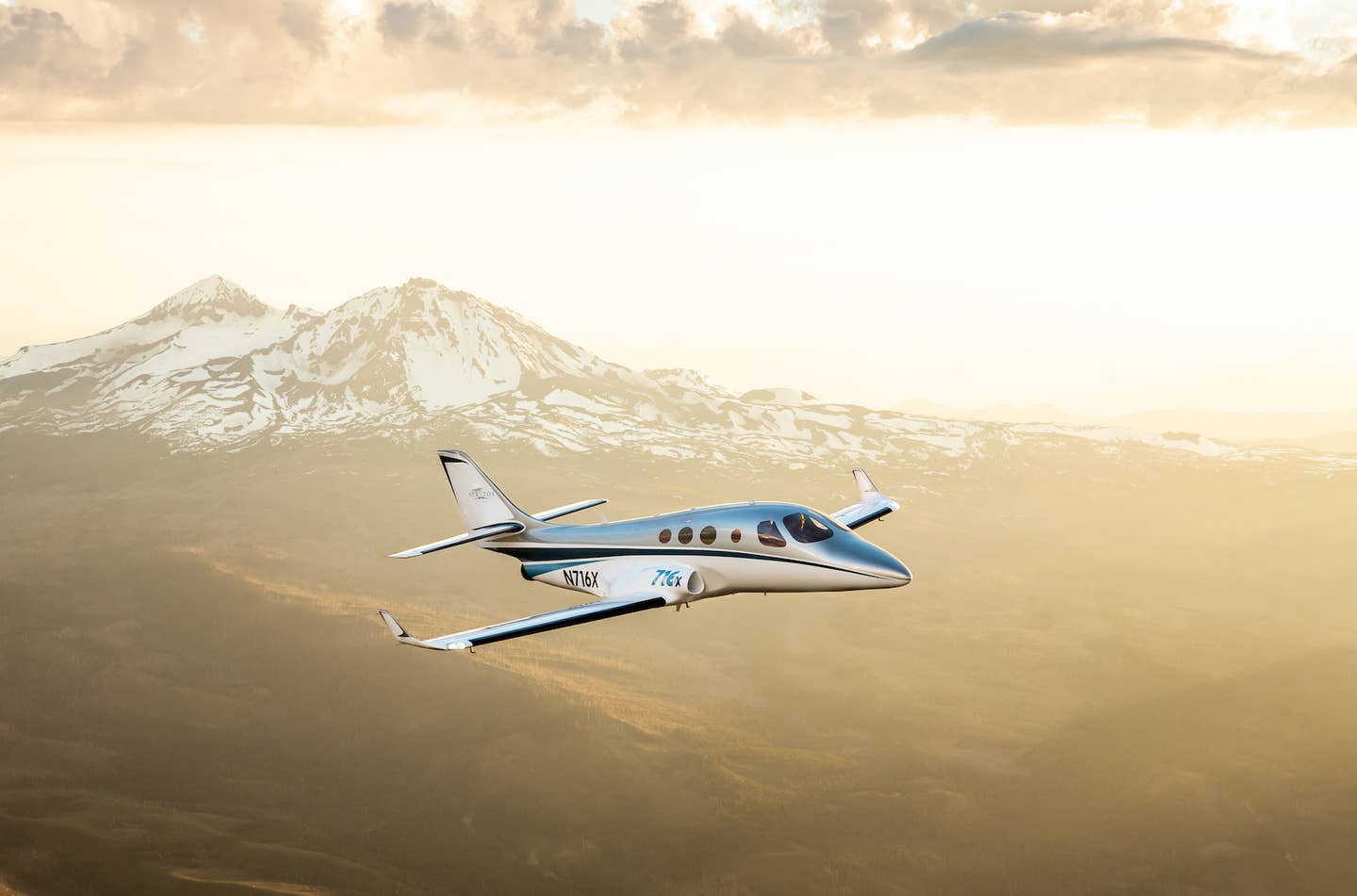
The 0.7 Mach planned cruise speed, single turbofan engine, six-seat configuration and experimental certification gave rise to the name of the Stratos 716X. Courtesy Stratos Aircraft
Among the many exciting aircraft on display on the EAA AirVenture grounds in Oshkosh, Wisconsin, a few stand out a little extra this week. Redmond, Oregon-based Stratos Aircraft brought the latest version of its light jet, the 716X, which will soon make its way to customers. This is the first time the public has a chance to see the 716X—the experimental version of what will eventually become the Part 23 certified Stratos 716. The planned cruise speed of 0.7 Mach, single turbofan engine, and six-seat configuration represent the numbering of the 716.
So far, Stratos has completed about 50 hours of flight testing of the 716X and has finished the first stage of envelope expansion, said Stratos Aircraft’s president and chief technology officer, Carsten Sundin. Following the show in Oshkosh, the flight test team will take the airplane above 28,000 feet, approaching the targeted service ceiling of 41,000 feet. Sundin said “the 716 is very similar to the 714, which has over 300 hours on it.” The 714 was Stratos’s initial proof of concept, and it is on display alongside its younger brother.
Stratos plans to sell 10 to 12 716X kits next year. These kits will help the company to streamline production processes and assembly line efficiencies for the 716. The build time for the 716X with a builder-assist program is expected to be approximately nine months. The kit includes a freshly overhauled Pratt & Whitney Canada JT15D5 turbofan with a 3,600-hour TBO and Garmin’s G3X avionics suite.
“At Stratos, our goal is to lower the cost of owning and operating a jet to turboprop levels,” Sundin said. The initial price tag for the 716X is $2.5 million and the certified version is expected to add an additional $1 million. Whether the company can get through certification and still maintain that price remains to be seen. The target for certification is 2028, but it’s “entirely funding dependent,” Sundin said.

Sign-up for newsletters & special offers!
Get the latest FLYING stories & special offers delivered directly to your inbox






